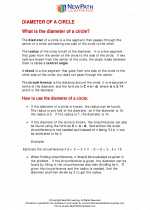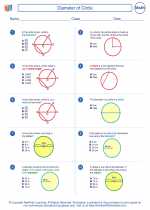Straight Line
A straight line is a set of points that extends indefinitely in both directions. It is the shortest distance between two points. The equation of a straight line is usually written in the form y = mx + b, where m is the slope of the line and b is the y-intercept (the point where the line crosses the y-axis).
Slope-Intercept Form
The slope-intercept form of the equation of a straight line is given by y = mx + b, where m is the slope and b is the y-intercept.
Point-Slope Form
The point-slope form of the equation of a straight line is given by y - y1 = m(x - x1), where (x1, y1) is a point on the line and m is the slope.
Standard Form
The standard form of the equation of a straight line is given by Ax + By = C, where A, B, and C are constants.
Graphing a Straight Line
- To graph a straight line, start by plotting the y-intercept (0, b) on the y-axis.
- Use the slope to find a second point. The slope indicates how much the line rises (or falls) for each unit of horizontal distance.
- Draw a straight line through the two points to represent the equation of the line.
Study Guide
To study straight lines, make sure to understand the concepts of slope, y-intercept, and how to write the equation of a line in different forms. Practice graphing lines and finding equations of lines given certain information, such as slope and a point on the line. Use online resources and textbooks to reinforce your understanding of straight lines and work through plenty of practice problems to solidify your knowledge.
Remember that a straight line is defined by its slope and y-intercept, and knowing how to work with these properties will help you understand and master the concept of straight lines in mathematics.
.◂Math Worksheets and Study Guides Sixth Grade. Diameter of Circle

 Worksheet/Answer key
Worksheet/Answer key
 Worksheet/Answer key
Worksheet/Answer key
 Worksheet/Answer key
Worksheet/Answer key
